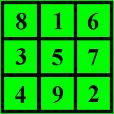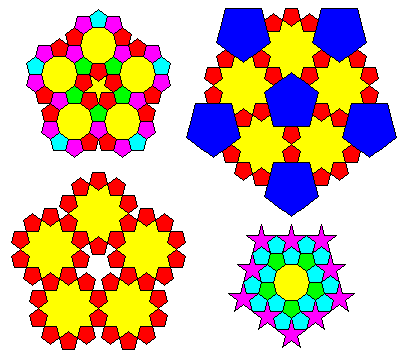In a file named Hw6ArrayPractice.java, write each of the following methods along with their corresponding well-designed and aptly-named test methods.
- scrabbleScore
In the game of Scrabble, players receive points for spelling words, where each letter has an associated point value (1 for A, 3 for B, 3 for C, 2 for D, and so on...). For example, ignoring special squares (which we will), the word "CAB" is worth 3+1+3, or 7 points. For more details, here is the Wikipedia page on Scrabble:
http://en.wikipedia.org/wiki/Scrabble
Write the following method:
public static int scrabbleScore(String s, int[] letterValues)
This method takes a String s and an array of 26 integers representing point values of the letters from A to Z in order, and returns the sum of the point values for each letter in the string. If the string is null or empty or if it contains any characters besides uppercase letters, or if the letterValues array is null or not of length 26, the result should be -1 to indicate an error.
If you are interested, here is an array holding the actual letter values for the English-language version of Scrabble:
private static int[] letterValues = {
// A, B, C, D, E, F, G, H, I, J, K, L, M
1, 3, 3, 2, 1, 4, 2, 4, 1, 8, 5, 1, 3,
// N, O, P, Q, R, S, T, U, V, W, X, Y, Z
1, 1, 3,10, 1, 1, 1, 1, 4, 4, 8, 4,10
};
Note: The letterValues array may contain point values besides the official point values (say, 25 for 'A', 18 for 'B', -33 for 'C', and so on). Your method must work for whatever letterValues array is provided.
- wordsInWord
Write the following method:
public static String[] wordsInWord(String s, String[] dictionary)
This method takes a string s and a possibly-unsorted array of ALL-CAPS strings, the dictionary, and returns a sorted array containing all the substrings of s (excluding s itself) that appear (case-insensitively) in the dictionary. So, for example, given the word "abcd" and the dictionary { "D", "ABCD", "AC", "BD", "BC"}, your method would return the array { "BC", "D" }. If either the string s or the dictionary array is null, your method should return null. However, if both are non-null and there are no substrings in the dictionary, your method should return a non-null array of size zero. Also, no word should appear more than once in the returned array, even if that word occurs more than once as a substring and is in the dictionary.
- isMagicSquare
According to the Mathworld page on Magic Squares, a magic square is "a square array of numbers consisting of the distinct positive integers 1, 2, ..., n2 arranged such that the sum of the n numbers in any horizontal, vertical, or main diagonal line is always the same number." For example, here is a magic square:

This square is magic because in contains the numbers 1, 2, ..., 9, and all the rows, columns, and diagonals sum to the same number (15).
Write the following method:
public static boolean isMagicSquare(int[][] a)
This method takes a 2d-array of int's and returns true if it represents a magic square, and false otherwise. Note that non-square matrices and null matrices are not magic squares, so your method should return false in these cases.
Note: magic squares do not have to be 3x3. They can be as small as 1x1 or arbitrarily larger.
In a file named Hw6Connect4.java, write the game of Connect4:
connect4.html (applet) or connect4.jar (app)
To play the game: Two players alternate turns dropping pieces (using the left, right, and down or space keys) in columns. First player to get 4-in-a-row wins that game. If the board fills up, that game is a tie. Play the game a bit to understand the rest of the design spec. The game IS the design spec, so your games should match its behavior (though you do not have to be "pixel perfect" -- just "very close"). For more details, here is the Wikipedia page on Connect4:
http://en.wikipedia.org/wiki/Connect_Four
Note: This is a repeat from last week, as most of you did not take advantage of this really interesting bonus problem. This week, you may again do up to any two of these but you may not repeat any that you submitted last week.
Among his lesser-known exploits, the great German mathematician and astronomer Johannes Kepler studied how polygons can tile the plan or portions of the plane. As part of these studies, he created these interesting figures:

In a file named Hw6BonusKeplerPolygon.java, paint any one or two of these four figures. Note that the lower-left figure is worth half as many bonus points as the other three figures. For this problem only, you do not have to make the figures scale according to the size of the window, but you do have to use loops as much as possible (which is an interesting conundrum) rather than manually place each polygon (which is less interesting).
In a file named Hw6BonusOthello.java, write a two-player game of Othello (also known as Reversi). If you do not know how to play this game, the rules are simple and it is quick to learn (though hard to master). You can learn about the game at the Wikipedia page:
http://en.wikipedia.org/wiki/Reversi
You can also play the game against a computer by searching for "Othello Applet" in the search engine of your choice. (Of course, it is also possible to find some Java source code for Othello by a similar search, but that is most definitely not allowed! Write the code yourself, and do not look at anyone else's implementation!!!)
Your program will not play against a person. Instead, it will support two people playing each other, in the same manner as your Connect4 game. Your program should not allow illegal moves, however. It should also automatically pass if a player has no legal moves, and automatically end the game when neither player has a legal move. Keep score and provide a generally pleasing and easy-to-use UI. Have fun with it!